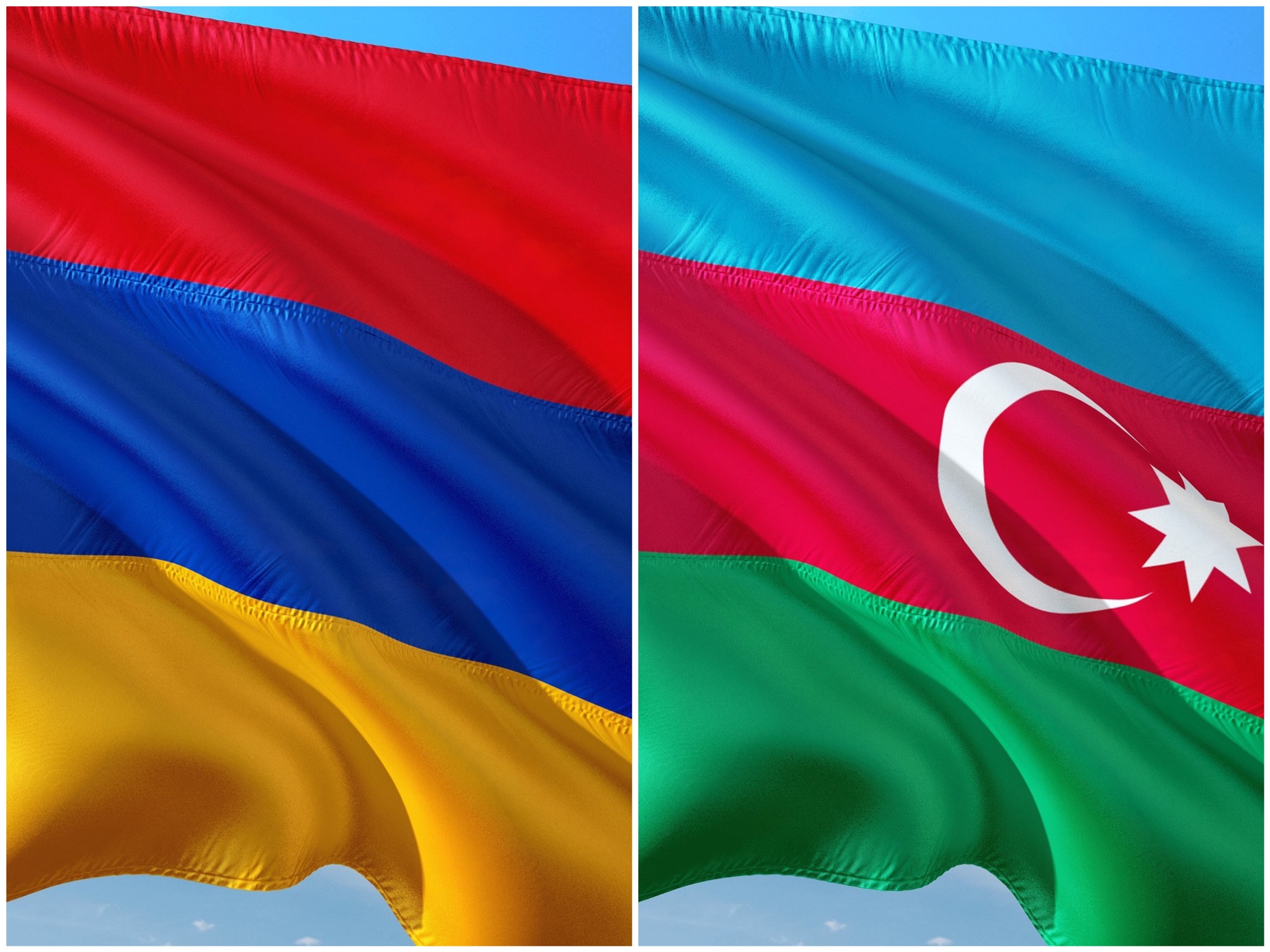The conflict between Armenia and Azerbaijan is one of the most enduring and intense rivalries in the South Caucasus. Rooted in historical, ethnic, and territorial disputes, this rivalry has resulted in multiple wars, skirmishes, and a deep-seated animosity that has persisted for over a century. The central point of contention between the two nations is the Nagorno-Karabakh region, a territory claimed by both countries. This article delves into the origins, evolution, and current state of the conflict between Armenia and Azerbaijan.
The Historical Background
The Early History of the Region
The roots of the conflict stretch back centuries, long before the emergence of modern nation-states. Nagorno-Karabakh, a mountainous region located within present-day Azerbaijan, has historically been home to a mixed population of Armenians and Azerbaijanis (then known as Caucasian Tatars). Throughout the medieval period, the region was ruled by various empires, including the Persian, Ottoman, and Russian Empires. Each of these empires influenced the demographic and cultural landscape of Nagorno-Karabakh, contributing to the complex historical tapestry that fuels the modern conflict.
The Role of Russian Imperialism
In the early 19th century, the Russian Empire expanded into the Caucasus, incorporating both Armenian and Azerbaijani territories. The shifting borders and the Russian policy of favoring one ethnic group over another at different times sowed seeds of discord. During this period, Armenians were encouraged to settle in Nagorno-Karabakh, leading to demographic changes that intensified ethnic tensions. The Russian strategy of divide and rule, intended to maintain control over diverse populations, inadvertently laid the groundwork for future conflicts.
The Soviet Era: A Complex Legacy
Stalin’s “Divide and Rule” Strategy
The collapse of the Russian Empire after World War I led to a brief period of independence for both Armenia and Azerbaijan. During this time, violent clashes erupted over Nagorno-Karabakh, culminating in a short-lived war. When the Soviet Union reasserted control over the Caucasus in the 1920s, Joseph Stalin made a fateful decision that would lay the groundwork for future conflict: Nagorno-Karabakh, despite its predominantly Armenian population, was made an autonomous region within the Azerbaijan Soviet Socialist Republic. This decision was part of Stalin’s broader strategy to “divide and rule” by keeping ethnic groups within the Soviet Union dependent on Moscow’s mediation. The Armenians of Nagorno-Karabakh were granted limited cultural autonomy but remained under Azerbaijani jurisdiction, fostering deep resentment and a sense of injustice among Armenians.
The Role of Nationalism in the Late Soviet Period
As the Soviet Union weakened in the 1980s, nationalist movements began to gain strength in both Armenia and Azerbaijan. The Armenian population of Nagorno-Karabakh, backed by the Armenian Soviet Socialist Republic, started demanding unification with Armenia. In 1988, the regional parliament of Nagorno-Karabakh voted to secede from Azerbaijan and join Armenia, a move rejected by Soviet and Azerbaijani authorities. This triggered a spiral of violence, with pogroms and ethnic cleansing targeting Armenians in Azerbaijan and Azerbaijanis in Armenia.
The Nagorno-Karabakh War (1988-1994)
The Escalation into Full-Scale War
The collapse of the Soviet Union in 1991 led to the emergence of independent Armenia and Azerbaijan, both of which claimed Nagorno-Karabakh. As diplomatic efforts failed, the conflict escalated into full-scale war. Armenian forces, backed by the Republic of Armenia, managed to seize not only Nagorno-Karabakh but also surrounding Azerbaijani territories, creating a significant refugee crisis. By the time a ceasefire was brokered in 1994, an estimated 30,000 people had been killed, and hundreds of thousands of Azerbaijanis had been displaced.
The Stalemate and the Minsk Group
The 1994 ceasefire created a fragile status quo: Nagorno-Karabakh remained under Armenian control, but it was internationally recognized as part of Azerbaijan. The Minsk Group, co-chaired by Russia, the United States, and France, was established to mediate a peaceful resolution, but negotiations made little progress. The lack of a final peace agreement kept tensions high, with frequent border skirmishes and an ever-present risk of renewed war.
The 2020 Nagorno-Karabakh War: A New Chapter
The Role of External Actors
In September 2020, decades of simmering tension exploded into a six-week war, the most intense since the 1990s. Unlike previous conflicts, this war saw significant involvement from external actors. Turkey provided military support and political backing to Azerbaijan, while Russia maintained a more neutral stance, though it eventually brokered a ceasefire. The involvement of these regional powers underscored the strategic importance of Nagorno-Karabakh and highlighted the geopolitical dimensions of the conflict.
The Outcome and Its Implications
The 2020 war ended with a decisive Azerbaijani victory, largely due to superior military technology, including drones supplied by Turkey and Israel. Azerbaijan regained most of the territories it had lost in the 1990s, including parts of Nagorno-Karabakh. The ceasefire agreement, which involved the deployment of Russian peacekeepers, has altered the regional balance of power, leaving Armenia weakened and in a state of political crisis.
The Human Cost and Lingering Hostilities
Ethnic Cleansing and Refugees
Both sides have accused each other of atrocities, and ethnic cleansing has been a tragic constant in this conflict. The displacement of hundreds of thousands of people, coupled with the destruction of homes and cultural heritage sites, has deepened mutual hatred and mistrust. For many Armenians and Azerbaijanis, the conflict is not just a political issue but a deeply personal one, tied to lost homes, family members, and historical grievances.
Propaganda and National Identity
The conflict has also been sustained by nationalist rhetoric and propaganda in both Armenia and Azerbaijan. In both countries, the dispute over Nagorno-Karabakh is central to national identity. In Armenia, the region is seen as an ancient Armenian homeland and a symbol of resistance against perceived Azerbaijani aggression. In Azerbaijan, it represents a struggle for territorial integrity and a rightful reclaiming of lands lost in the 1990s.
The Path Forward: Is Peace Possible?
Obstacles to a Lasting Solution
Despite various ceasefire agreements and international mediation efforts, a lasting peace remains elusive. The issues at the heart of the conflict—territorial claims, the status of Nagorno-Karabakh, the rights of displaced people—are deeply contentious. Moreover, the lack of trust between the two sides, coupled with the influence of regional powers like Russia and Turkey, complicates the search for a sustainable resolution.
Potential Avenues for Reconciliation
While the prospects for peace are bleak, some experts suggest that confidence-building measures, economic cooperation, and dialogue at the civil society level could gradually ease tensions. However, these efforts require political will, which has often been lacking on both sides. Additionally, any lasting solution must address the concerns of the displaced populations and ensure security and rights for all ethnic groups in the region.
Exploring the Cultural Dimensions
Cultural Heritage and Historical Sites
Nagorno-Karabakh is rich in cultural heritage, with numerous churches, monasteries, and historical sites that are significant to both Armenians and Azerbaijanis. The destruction or neglect of these sites during the conflict has been a source of deep resentment. Efforts to preserve and respect these cultural landmarks could serve as a starting point for dialogue and mutual understanding. Encouraging joint preservation projects might foster cooperation and highlight shared historical narratives.
Education and the Role of History
Education systems in both Armenia and Azerbaijan often perpetuate nationalistic narratives, emphasizing historical grievances and glorifying past victories. Reforming educational curricula to promote a more balanced view of history could help break the cycle of hatred. Initiatives that encourage exchanges between young people from both countries, such as student exchange programs or joint cultural events, could lay the groundwork for a more peaceful future.
Economic Factors: A Double-Edged Sword
The Economic Impact of Conflict
The ongoing conflict has had a detrimental impact on the economies of both Armenia and Azerbaijan. Military expenditures drain resources that could be invested in development and infrastructure. Additionally, the presence of unresolved territorial disputes discourages foreign investment and limits economic cooperation between the two countries. The economic stagnation exacerbates social issues and feeds into the cycle of conflict.
Economic Cooperation as a Path to Peace
Despite the challenges, economic cooperation offers a potential path to peace. Joint economic projects, such as infrastructure development or energy initiatives, could create mutual dependencies that incentivize peaceful relations. If economic ties can be strengthened, they might foster a pragmatic approach to resolving political differences, as seen in other conflict areas around the world.
The Influence of Diasporas
Armenian and Azerbaijani Diasporas
Both Armenia and Azerbaijan have significant diasporas around the world, particularly in Russia, the United States, and Europe. These communities often play a pivotal role in shaping international perceptions of the conflict. They can be powerful advocates for peace, but they can also exacerbate tensions by funding nationalist causes or spreading partisan narratives. Engaging the diaspora in peacebuilding efforts could provide new avenues for dialogue and reconciliation.
Leveraging Diaspora Influence
Diaspora communities possess financial resources, political connections, and media influence that can be harnessed for peacebuilding. Initiatives that promote dialogue and collaboration among diaspora groups could help shift the narrative towards reconciliation. Encouraging diaspora-led humanitarian projects in the region may also help to reduce suffering and build goodwill.
Technology and Modern Warfare
The Impact of Modern Military Technology
The 2020 Nagorno-Karabakh War demonstrated the transformative impact of modern military technology, particularly the use of drones and precision-guided munitions. These technologies gave Azerbaijan a significant advantage, altering the strategic balance in the region. Understanding the implications of such technologies is crucial for future conflict resolution efforts, as they change the nature of warfare and the calculus of military engagement.
Cybersecurity and Information Warfare
In addition to physical warfare, both Armenia and Azerbaijan have engaged in cybersecurity and information warfare. Propaganda campaigns, hacking attacks, and misinformation have become tools in the conflict, complicating efforts to reach a diplomatic solution. Addressing these challenges will require innovative approaches to cybersecurity and media literacy, ensuring that both governments and citizens are better equipped to navigate the digital landscape.
A Glimpse into the Future
Scenarios for Resolution
Several potential scenarios exist for the resolution of the Nagorno-Karabakh conflict. These include the establishment of a fully autonomous Nagorno-Karabakh under international supervision, a negotiated settlement involving land swaps, or continued military stalemate. Each scenario presents unique challenges and opportunities, requiring careful consideration and international engagement.
The Role of International Organizations
International organizations, including the United Nations and the Organization for Security and Co-operation in Europe (OSCE), play a critical role in mediating the conflict. Their continued involvement is essential for ensuring that both Armenia and Azerbaijan adhere to international norms and agreements. Strengthening the capacity of these organizations to mediate disputes and enforce peace agreements could enhance their effectiveness in the region.
The animosity between Armenia and Azerbaijan is rooted in a complex mix of history, territorial disputes, and national identity. While the conflict over Nagorno-Karabakh remains the primary driver of hostility, it is intertwined with broader geopolitical dynamics and deep-seated historical grievances. As long as these issues remain unresolved, the cycle of violence is likely to continue, with profound consequences for both countries and the broader region. For the international community, the Armenia-Azerbaijan conflict is a sobering reminder of how deeply entrenched historical conflicts can be and how difficult it is to achieve peace in regions where identity, land, and history collide.




